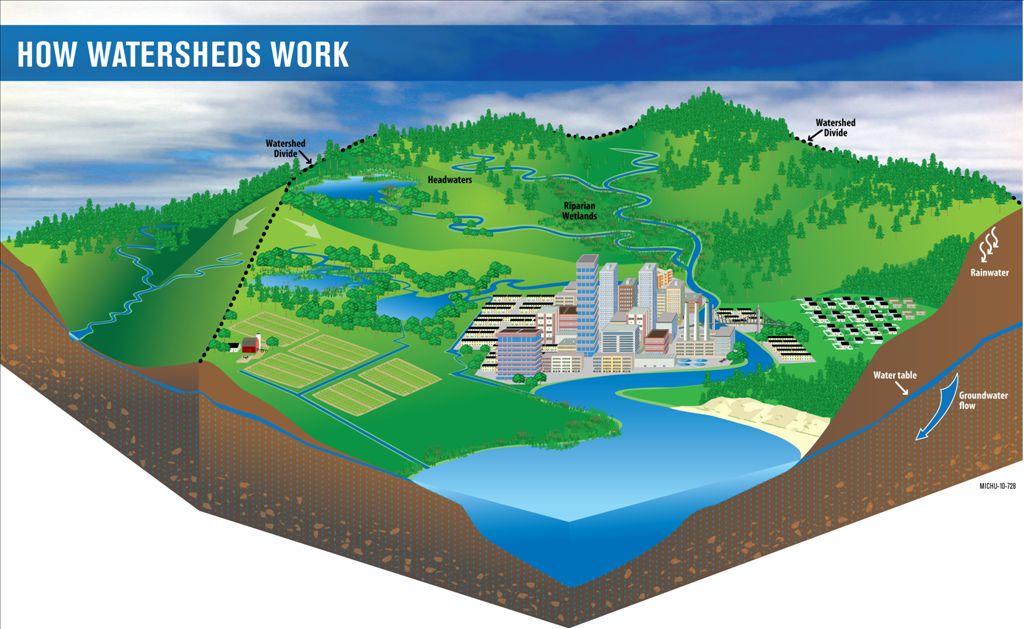What is a Watershed?
Purpose of Watershed Protection
Lake Huron Watersheds
Bi-National Partnership
Contact Us
Home > About > Purpose of Watershed Protection
Now that you know what watersheds are, why should their health matter to you?
Watersheds directly affect water quality, whether it's for drinking or recreation. Everything we do in a watershed, from caring for our lawns and gardens to picking up our leaves, affects the local water body. Caring for your watershed is caring for your local lake or stream.
Unhealthy watersheds affect wildlife. The polluted water supply that results can become harmful to humans. Aquatic life quickly suffers the effects of watershed pollution, while new pollutants introduced into ecosystems alter wildlife habitats. This reduces biodiversity by eliminating some species and introducing new, invasive ones that destroy the native species. That, in turn, can affect the food chain, from microbial organisms that feed birds and animals to fish that feed humans.
Algae blooms from fertilizer runoff draining into water harm watershed health, as do mercury and lead seeping into the water supply due to pollution. Treated and untreated wastewater and stormwater can flow directly into lakes, rivers, and streams. If ignored, the waters will degrade, which is unfortunate because these same waters also provide habitat for numerous plants, animals, and birds.
When land use in a watershed is changed, the flow it contributes to water bodies and wetlands is impacted by those changes. For example, when farmland is converted for housing, business, and entertainment uses, there is an increase in impervious surfaces – places where rain drops and snow melt cannot permeate the ground. The flow is then affected by these hard surfaces, such as rooftops and parking lots, creating what is known as nonpoint source water pollution. The flow collects oil, pollutants, salt, grit, etc., as it moves and eventually dumps into drainage areas – our beloved lakes, rivers, wetlands, and ground water recharge regions. Hard ground can also impact the amount and velocity of runoff water. Not surprisingly, this can lead to other undesirable conditions, such as increased flooding, erosion, and loss of habitats, in addition to decreased water quality.
The threat of erosion also exists. Water flowing to a stream picks up dirt along the way. If the water picks up enough soil over time, the land along that stream will become unstable and eventually erode away. If you live along a river bank, this could mean losing your backyard. For wildlife that lives in this area, it means a loss of their habitat.
Sources: www.howstuffworks.com & Antrim County Local Ordinance Gaps Analysis
Lake Huron Watersheds
Northeast Michigan Council of Governments
80 Livingston Blvd. | PO Box 457
Gaylord, MI 49734
(989) 705-3730 | nemcog.org


